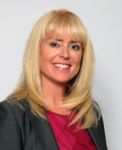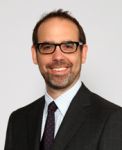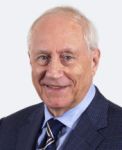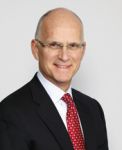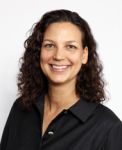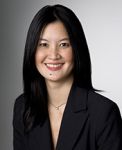Why Protect Medical Device Inventions in Canada?
The Medical Device sector in Canada is booming. Canada’s Medical Device sector encompasses more than 1,500 firms employing some 35,000 people, and accounts for approximately $6 billion in sales 1. In 2011, Canada exported more than $1.8 billion worth of Medical Devices2. The bulk of these exports were to the United States, which accounted for over 60% of Canada’s total domestic Medical Device exports in 2011. Furthermore, worldwide leaders in the Medical Device sector have a strong presence in Canada, and are expanding. For example, one leading U.S. based Medical Device firm recently announced a $50 million investment to expand its research, training, and manufacturing operations in Canada, with $15 million in support from the government3.
Due to the thriving industry, protecting Medical Device inventions in Canada is not only a worthwhile investment for foreign Medical Device companies, but can be of critical importance to when considering a global strategy.
How to Protect Medical Device Inventions in Canada
Canadian patent practice has many similarities to foreign practice, but there are also many quirks that are unique to Canadian practice, and that should be considered when drafting a patent application that is to be filed in Canada.
Medical Methods
The Canadian Intellectual Property Office does not allow claims that are directed to methods of medical treatment and methods of surgery 4. Invasive diagnostic methods will also fall within this prohibition. For example, the following claim would generally not be allowed in Canada: “A method for treating a patient using device X, the method comprising the steps of A, B, and C”.
Nevertheless, medical use claims are generally permitted in Canada, as long as they do not include an active treatment or surgical step. Accordingly, in Canada, the above claim can be rewritten as follows: “The use of device X to treat a subject having disease Y, wherein the device X comprises elements Y and Z”. Such a claim would generally be patentable subject matter in Canada.
Some medical procedures, nevertheless, can be protected by method claims. Particularly, in order to be considered a method of medical treatment, the method must treat or prevent a pathological condition. For example, both aging and pregnancy are not considered by the patent office to be pathological conditions 5, and therefore claims directed to methods of preventing aging or preventing pregnancy are considered permissible subject matter in Canada.
Furthermore, although claims to methods of medical treatment are not allowed in Canada, claims to both non-invasive diagnostic methods and cosmetic methods are allowed 6. However, when drafting these claims, it is important to ensure that the claim language does not include steps that provide a secondary therapeutic benefit. If any steps do provide a secondary therapeutic benefit, the claim will be rejected.
Means-Plus-Function Language
It is well known that means-plus-function claim language in the United States can be quite limiting, and according to 35 USC 112, restricts the claim to those embodiments that are disclosed in the specification. This is not the case in Canada, where no equivalent limitation exists. Rather, in Canada, means-plus-function claim language is construed according to “purposive construction” principles, which require that the claim language be interpreted according to what a skilled reader would have understood the claim language to mean 7. As a result, means-plus-function claim language is generally interpreted quite broadly in Canada, and when drafting an application that is to be filed in Canada, one could consider using means-plus function language in order to secure broad protection. In general, alternate claim styles that are used in US practice instead of “means plus function” are suitable for Canada. For example, a US patent application may use the term “applicator for applying” a drug instead of “means for applying” a drug. This should work as well in Canada as “means plus function” language.
Excess Claims Fees
Unlike many foreign patent offices, the Canadian Intellectual Property Office does not charge any excess claim fees. Accordingly, when drafting an application that is to be filed in Canada, it is advisable to include as many claims as is practical. In addition, multiple dependencies are permitted. If there is a unifying technical feature in the claims then they should all issue in the same patent, without restriction.
Incorporation by Reference
Incorporation by reference is not permitted in Canada 8. Accordingly, any disclosure that is important to the application (e.g. for enablement or support) must be explicitly included in the description at the time of filing.
Conclusion
The tips above should be considered when drafting a medical device-related patent application that is to be filed in Canada. There other quirks of Canadian practice that will arise as prosecution progresses. A skilled Canadian Patent practitioner can guide you through this process, and ensure that your protection in Canada is as strong as possible.
1 MEDEC, The Medical Device Industry in Canada, accessed April 2014
2 Invest in Canada 2012, Medical Devices, Canada’s Competitive Advantages
3 ConsiderCanada.com, accessed April 2014
4 Manual of Patent Office Practice, Section 17.02.03
5 Re Application No. 559,960 of Senentek (1997) C.D. 1213; Re Application No. 532,566 of General Hospital Corporation (1996) C.D. 1209
6 Re Application No. 003,389 of N.V. Organon [(1973) C.D. 144, 15 C.P.R. (2nd), 253 (P.A.B.)]; Re Application for Patent of Goldenberg [(1988) C.D. 1119, 22 C.P.R. (3rd), 159 (P.A.B.)]
7Free World Trust v. Électro Santé Inc., 2000 SCC 66 at paragraph 50; and Whirlpool Corp. v. Camco Inc., 2000 SCC 67 at paragraph 48 8
8Patent Rules, Section 81
